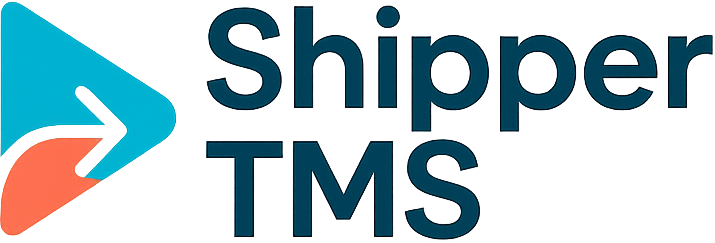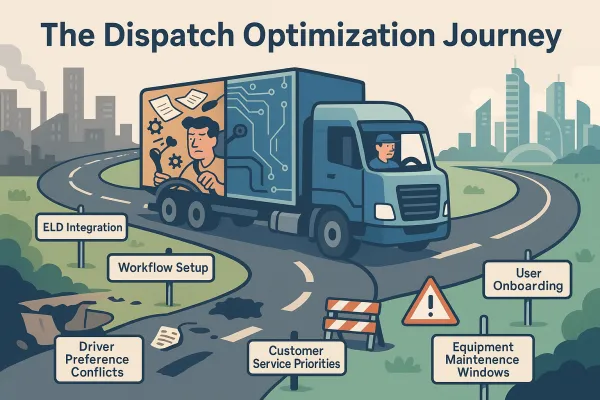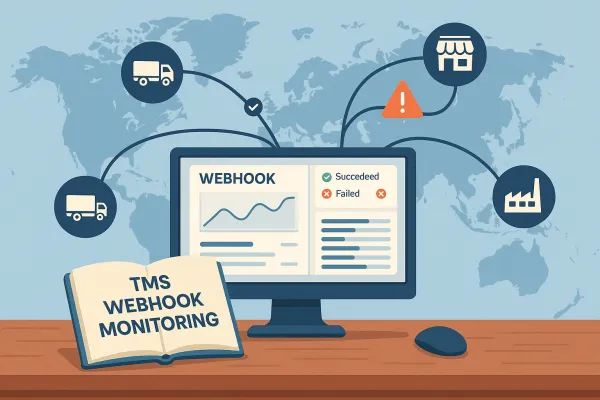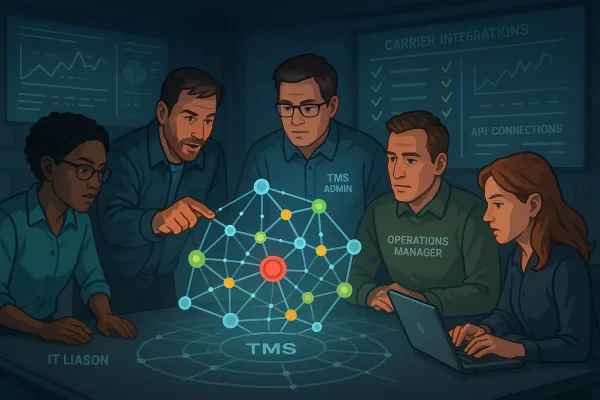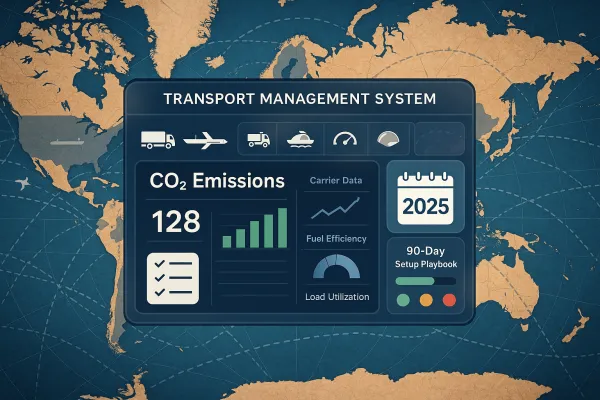TMS Automated Exception Handling: The 60-Day Setup That Cuts Manual Interventions by 75%
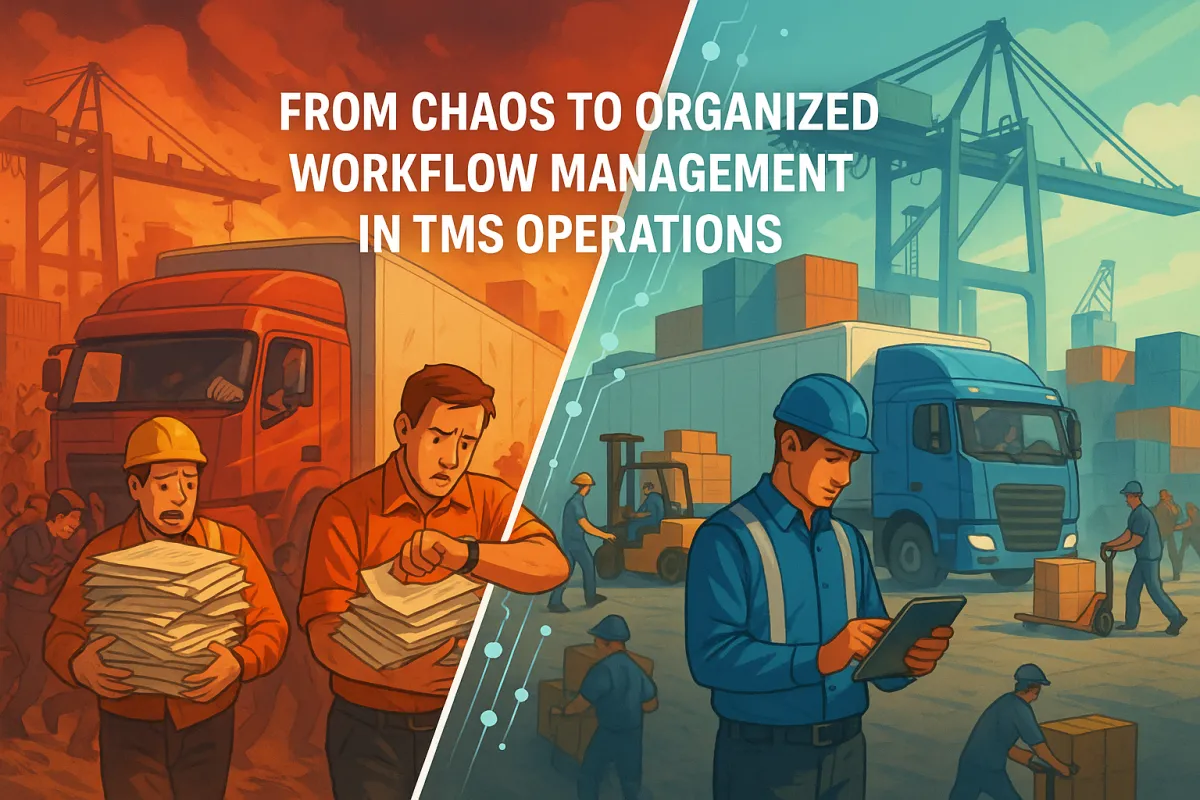
Your operations team catches three shipment exceptions before 7 AM. By noon, you've handled 12 more. Each one requires phone calls, email chains, and manual workarounds. The frequency of exceptions has risen, requiring more time and resources devoted to handling each need, leading to additional costs in managing both inbound and outbound freight. But what if 75% of those exceptions never reached your desk at all?
Here's your 60-day playbook for TMS automated exception handling configuration that transforms reactive chaos into proactive workflow management. This isn't about theoretical optimization - it's about building systems that work when disruptions inevitably happen.
Why Manual Exception Handling Is Killing Your TMS ROI
Manual exception management costs more than your monthly TMS subscription. Only 16% of organizations report success in their digital transformation efforts, often hindered by poor digital adoption rates. The hidden expense isn't just staff time - it's the compounding effect of delayed decisions, missed opportunities, and customer dissatisfaction cascading through your supply chain.
Consider a typical dock scheduling conflict. Without automation, someone discovers the issue when the truck arrives. They spend 20 minutes calling carriers, updating internal systems, and notifying stakeholders. The driver waits. Detention costs accumulate. Your next shipment gets delayed. One exception creates four more problems.
Less time is lost, resulting in greater efficiency and profitability in your supply chain when exceptions trigger automated responses instead of manual interventions. Modern platforms like MercuryGate, Descartes, and Cargoson now include exception automation features that handle routine disruptions without human involvement.
The math is straightforward: if your team handles 50 exceptions weekly at 15 minutes each, that's 12.5 hours of reactive work. Automate 75% of these, and you've freed up nearly 10 hours for strategic activities like carrier relationship management and process improvement.
The 3 Exception Types Every Shipper TMS Should Automate First
Not all exceptions deserve automation. Start with high-frequency, low-complexity scenarios that follow predictable resolution patterns.
Dock scheduling conflicts are automation gold mines. Automating exceptions within your dock schedule will generate automated notifications of potential issues, allowing users to reschedule deliveries or scale current loading and unloading processes to eliminate the exception. Configure your TMS to monitor appointment slots and automatically suggest alternative times when conflicts arise.
Driver timeline changes create ripple effects across your network. Other exceptions can be handled seamlessly, such as notifying drivers of different delivery timelines or advising suppliers of potential delays, reducing the risk of detention time. Systems like Blue Yonder, Transporeon, and Cargoson can automatically alert affected parties when delivery windows shift, minimizing manual coordination.
Supplier delay notifications represent the third automation priority. Early visibility into inbound delays enables proactive responses: rescheduling outbound shipments, adjusting production schedules, or notifying customers before promises are broken.
These three categories account for roughly 60% of typical shipper exceptions. Master them, and you've automated the majority of your reactive workload.
Week 1-2: Mapping Your Current Exception Triggers
Document everything before automating anything. You need baseline data to measure improvement and identify which processes deserve automation investment.
This allows the attention to be focused on what is a known exception, rather than reacting to everything. Start by tracking exceptions for two weeks. Category, frequency, resolution time, and stakeholders involved. Create a simple spreadsheet with these columns: exception type, trigger event, current resolution process, time required, and stakeholders notified.
Focus on exceptions that occur at least weekly. One-off disruptions don't justify automation complexity. Look for patterns: do carrier rejections always happen on Fridays? Do dock conflicts cluster around month-end? These patterns reveal automation opportunities.
Tools like Manhattan Active, E2open, and Cargoson offer process mapping features that visualize exception workflows. Use them to identify bottlenecks where automation could compress resolution time from hours to minutes.
Track who gets involved in each exception. If three people touch every dock conflict, automation should notify all three simultaneously instead of requiring sequential phone calls.
Week 3-4: Configuring Alert Rules and Workflows
Transform your exception mapping into automated triggers. This phase requires precise rule definition - too broad, and you'll flood users with false alarms; too narrow, and critical exceptions slip through.
When exceptions do occur, optimization workflows within the TMS ensure the appropriate routing and quickest resolution. Configure alerts using conditional logic: IF appointment time changes AND less than 4 hours notice, THEN notify dock manager and carrier simultaneously.
Start with simple if-then rules before attempting complex conditional workflows. Oracle TM, SAP TM, and Cargoson offer workflow builders with drag-and-drop interfaces that simplify rule creation for non-technical users.
Define escalation paths clearly. Level 1 alerts go to operations teams for immediate action. Level 2 alerts notify supervisors when issues aren't resolved within defined timeframes. Level 3 alerts reach management when exceptions impact customer commitments.
Test each workflow in sandbox environments before production deployment. Create test scenarios that mirror real exceptions, then verify that alerts fire correctly and reach appropriate stakeholders. This prevents automation rules from creating more problems than they solve.
Week 5-8: Testing and Refining Your Exception Logic
Your initial automation rules will need adjustment. Real-world exceptions rarely follow the patterns you anticipate during configuration.
The TMS can be used to generate a predictive model, helping shippers understand when and why exceptions are likely to occur, as well as providing automated locations. Use this testing phase to refine predictive capabilities that enable proactive rather than reactive responses.
Start with pilot programs covering 25% of your shipments. Monitor automation performance daily during the first two weeks. Track false positives (alerts for non-issues) and false negatives (missed actual exceptions). Adjust rule parameters based on this feedback.
Kuebix, Uber Freight, and Cargoson provide testing environments where you can validate rule changes without impacting live operations. Use these sandbox features to experiment with rule modifications before implementing changes in production.
Gather user feedback systematically. Operations teams will quickly identify which automated alerts provide value versus which create noise. Their insights drive rule refinements that improve automation effectiveness.
The 4 Integration Points That Make or Break Exception Automation
Exception automation fails without solid system integrations. Your TMS needs real-time data from multiple sources to trigger appropriate responses.
End-to-End Transportation Processes: Comprehensive management from order to settlement, including intelligent route planning, dynamic replanning, real-time tracking, exception handling, and automated freight audits. These capabilities require seamless data flow between internal and external systems.
ERP connectivity provides order status, inventory levels, and production schedules that determine exception severity. When a supplier delays a critical component, your TMS needs ERP data to understand production impact and automatically prioritize expedited alternatives.
Carrier API connections enable real-time status updates and automatic rebooking when exceptions occur. Modern carrier networks provide webhooks that push status changes directly to your TMS, eliminating polling delays that create blind spots.
Customer notification systems complete the automation loop by informing affected parties without manual intervention. Integration with email platforms, SMS gateways, and customer portals ensures stakeholders receive timely updates regardless of their preferred communication channel.
Dock management systems provide the appointment data necessary for proactive scheduling conflict detection. Platforms like Alpega, nShift, and Cargoson offer pre-built integrations that connect dock scheduling with transportation planning.
Measuring Success: KPIs That Prove Your Exception Automation Works
Track specific metrics that demonstrate automation value. Generic efficiency improvements don't justify continued investment in automation tools.
The risk of mistakes when handling exceptions manually continues to exist, but automating the process eliminates many of these opportunities for error. Measure error reduction alongside time savings to quantify total automation benefits.
Exception resolution time should drop by 60-80% for automated workflows. Track average resolution time before and after automation implementation. Include this metric in monthly operations reports to demonstrate ongoing value.
Manual intervention rate measures automation effectiveness. Start by establishing your baseline: what percentage of exceptions required human intervention before automation? Target reducing this by 75% within 90 days of full implementation.
Customer notification speed improves significantly with automation. Measure time from exception occurrence to customer notification. Automated systems should achieve notifications within 5 minutes versus 2-4 hours for manual processes.
Detention and demurrage costs decline when automated systems resolve dock conflicts and delivery delays proactively. Track monthly detention expenses as a percentage of transportation spend - automation should reduce this by 40-60%.
FreightPOP, 3Gtms, and Cargoson provide built-in reporting dashboards that track these KPIs automatically. Configure weekly reports that highlight automation performance trends and identify areas requiring rule adjustments.
The 75% reduction in manual interventions isn't theoretical - it's achievable with systematic exception automation implementation. Start with the three high-impact exception types, build solid integrations, and measure results consistently. Your operations team will thank you when they can focus on strategic decisions instead of reactive firefighting.
